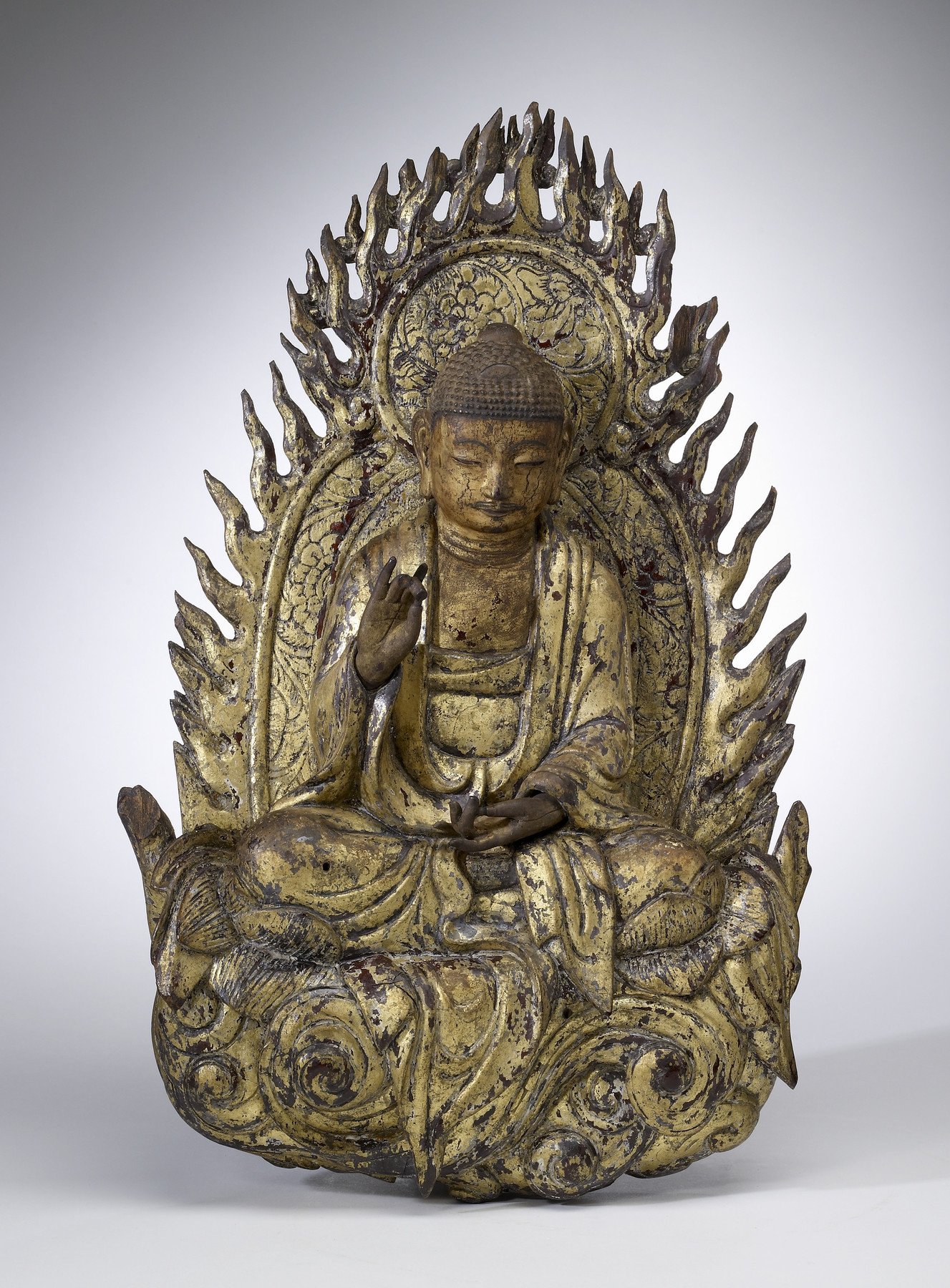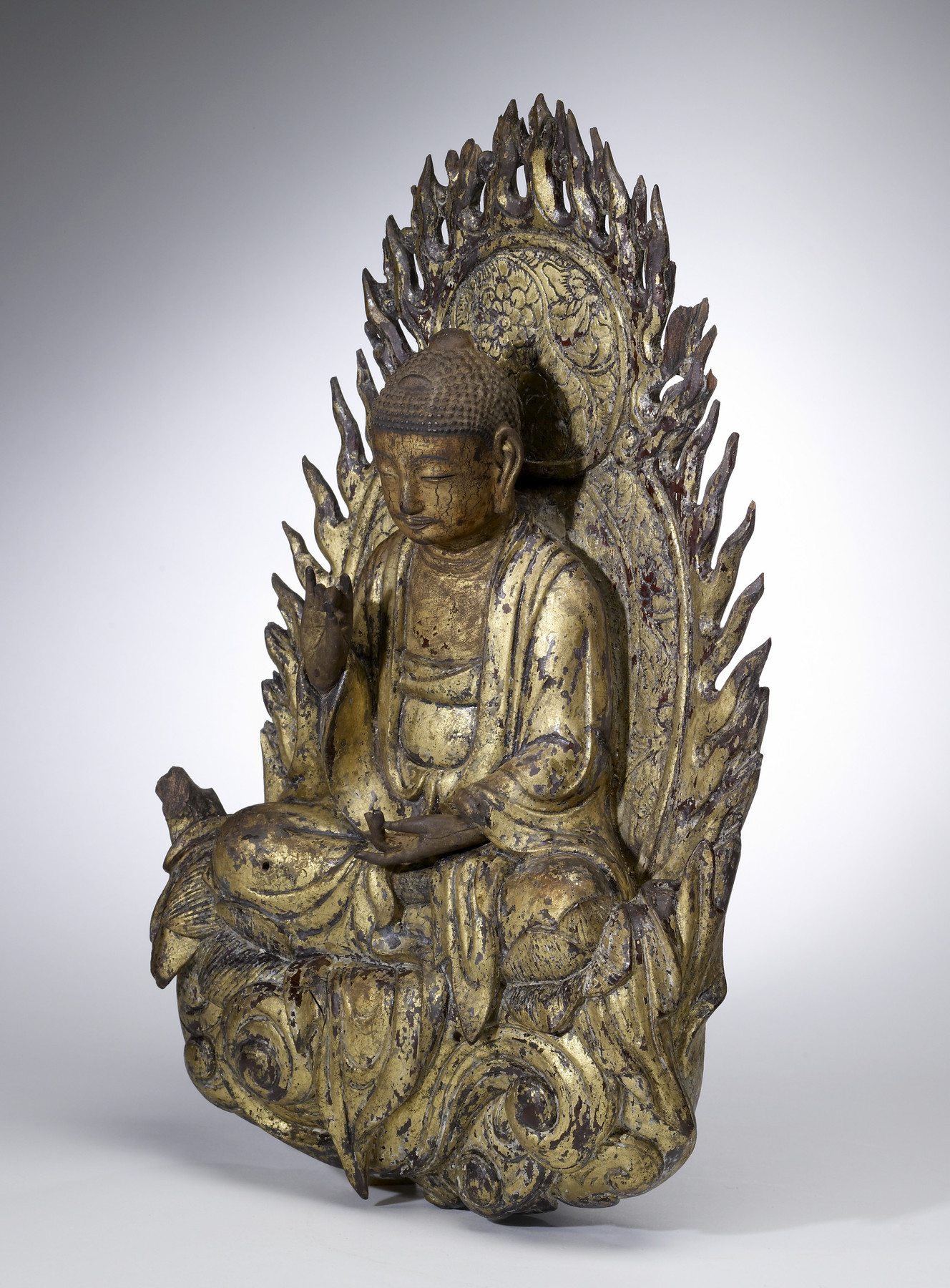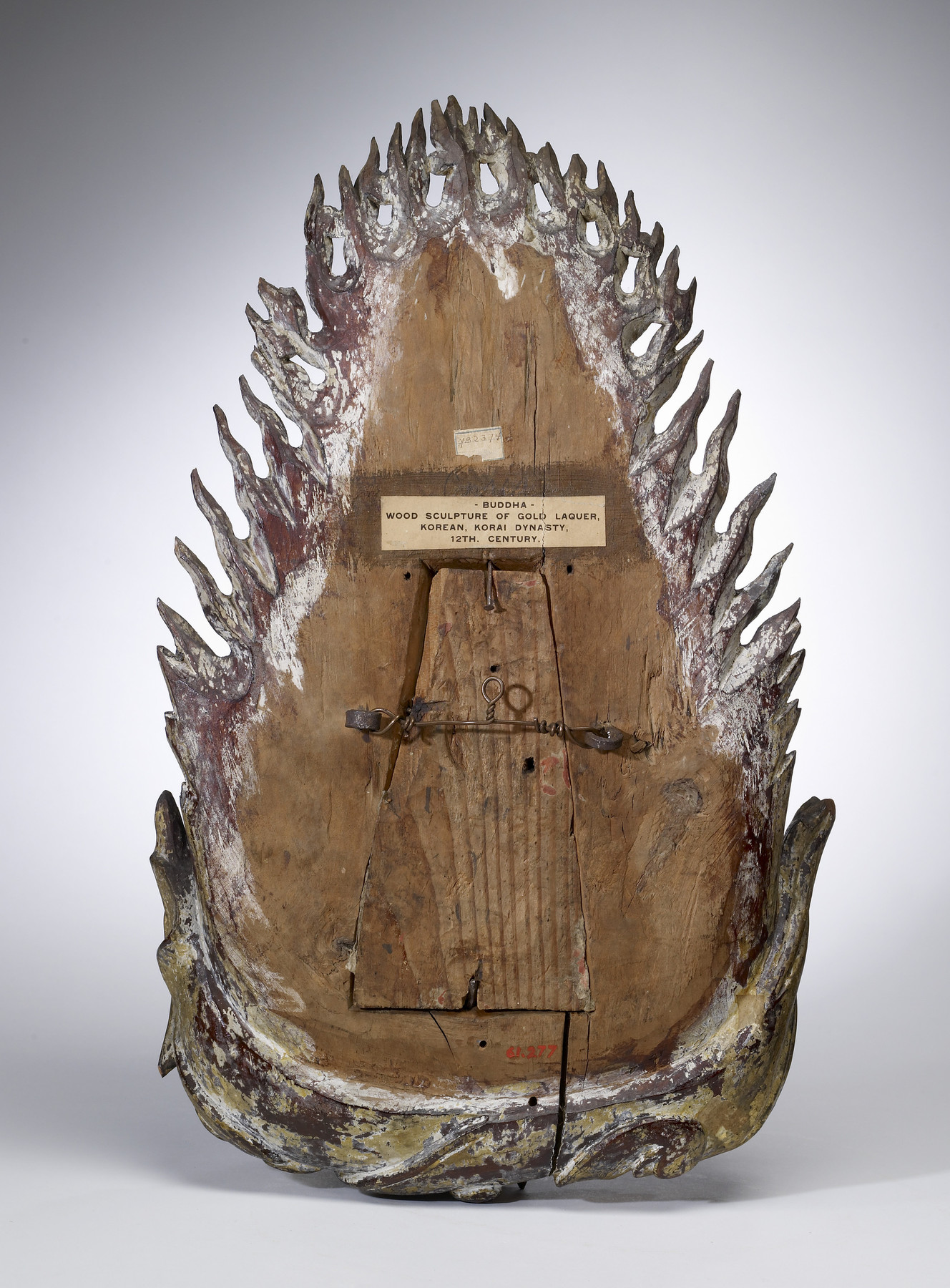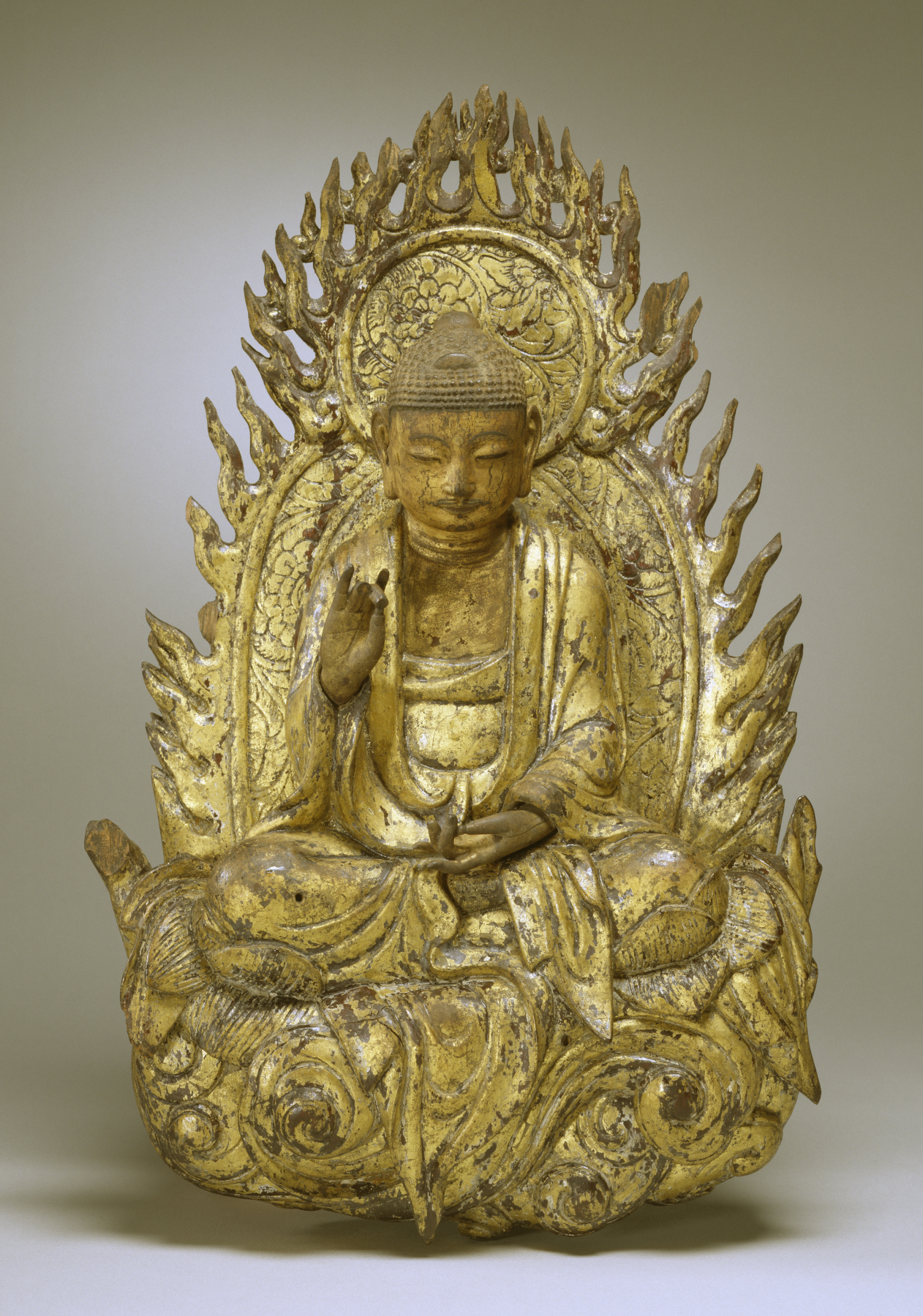Buddha
(Japan and Korea )
Buddhist sculptures and paintings are not merely works of art; they are sacred images that contain the presence of the divinities they depict. A sculpture or painting is transformed into the sacred receptacle for a divine being through consecration rituals that include an “eye-opening” ceremony, which brings the image to life and endows it with sense faculties, and an initial offering, often scrolls of religious text; several scrolls were placed in a hollow compartment in the back of this sculpture.
The texts and the sculpture date to the Joseon (Fresh Dawn) dynasty, which was established in Korea in 1392 and lasted until the end of the 19th century. Joseon rulers rejected Buddhism as the official religion in favor of a neo-Confucian ideology that sought to understand the universe through human reason. Buddhism nonetheless remained an important part of Korean culture, and monarchs and members of the court commissioned works of art for private devotion.
Inscription
Provenance
Provenance (from the French provenir, 'to come from/forth') is the chronology of the ownership, custody, or location of a historical object.
Yamanaka & Co., New York; purchased by Henry Walters, Baltimore, 1920; by bequest to Walters Art Museum, 1931.
Conservation
| Date | Description | Narrative |
|---|---|---|
| 4/18/2017 | Examination | Surface dirt was removed. Two missing flames tips on the proper right side of the background were replaced and inpainted. |
| 4/24/2017 | Treatment | loss compensation; surface cleaned |
| 4/24/2017 | Treatment | Surface dirt was removed. Two missing flames tips on the proper right side of the background were replaced and inpainted. |
Geographies
Korea (Place of Origin)
Measurements
H: 16 9/16 × W: 10 3/8 × D: 3 15/16 in. (42 × 26.4 × 10 cm)
Credit Line
Acquired by Henry Walters, 1920
Accession Number
In libraries, galleries, museums, and archives, an accession number is a unique identifier assigned to each object in the collection.
In libraries, galleries, museums, and archives, an accession number is a unique identifier assigned to each object in the collection.
61.277








